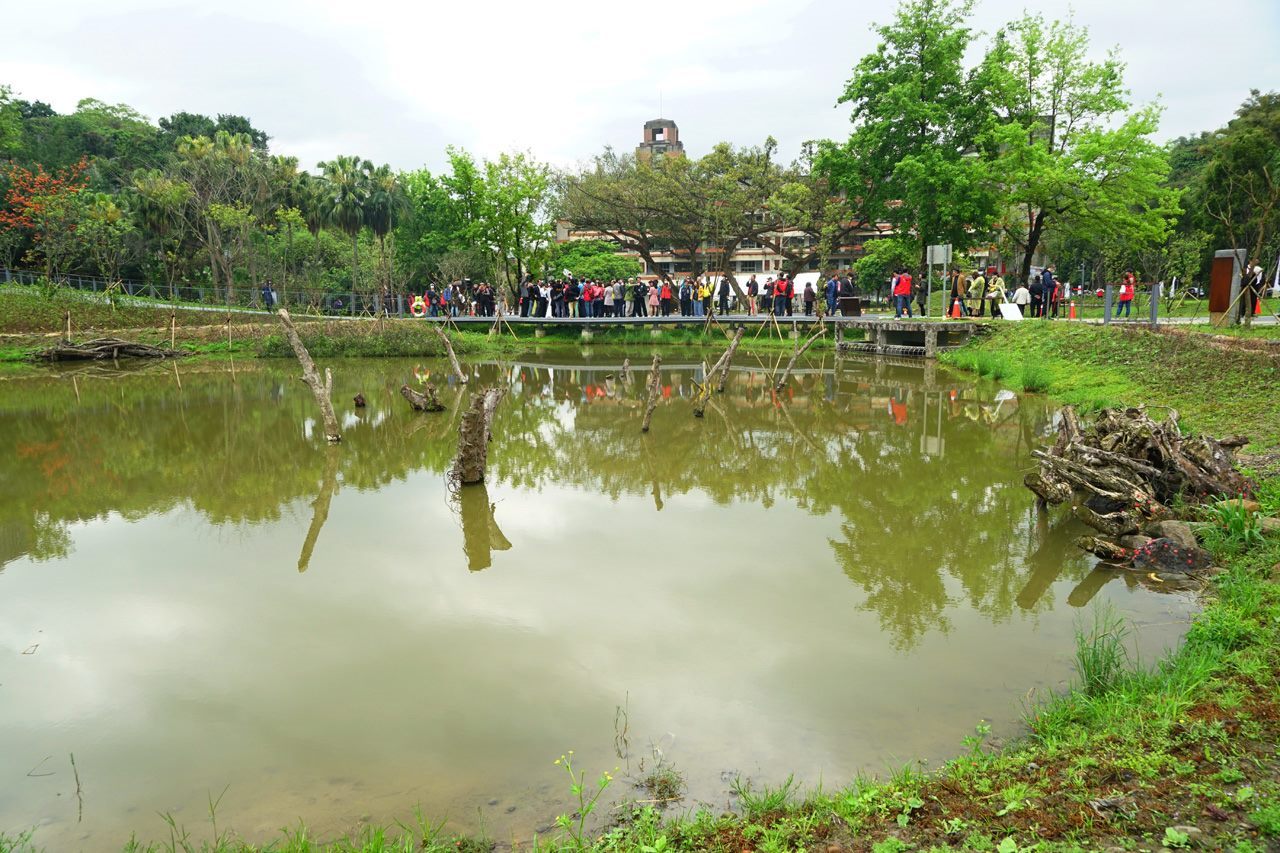Yongchunpi Wetland Park Open
 Taipei City Mayor Ko Wen-Je attended the opening ceremony of Yongchunpi Wetland Park on March 12.
Taipei City Mayor Ko Wen-Je attended the opening ceremony of Yongchunpi Wetland Park on March 12.
He commented that Yongchunpi was formerly an artificial pond that later became farmland when it silted up. When the Nationalist Government arrived in Taiwan, the area became a barracks but subsequently fell into disuse due to cutbacks in the armed forces. He remembered that the first time he visited the area was before he ran for mayor, and Chang Mao-Nan was the person who brought him there. At the time, it was an abandoned barracks with picturesque scenery and a stele inscribed with the words Yongchunpi. Upon closer examination, he realized that this place was a pond a century ago, and these anecdotes have all been documented in history.
After he came into office, the original plan was to build public housing on the site, but since the Wetland Conservation Act was promulgated in 2016, and it is a known fact that Taiwan’s total population has reached its peak this year – after which the number will begin to decline – and although public housing is important, creating something that can benefit Taipei citizens in the long run is also very important. In light of the promulgation of the Wetland Conservation Act coupled with the history and legal status of Yongchunpi, as well as its natural landscape, Ko contemplated building a wetland park in Taipei City, and plans were therefore implemented.
Ko pointed out that it has been 6 years since the dawning of the idea in 2014, and the first step involves resolving land-related problems. Since it was formerly a barracks site, a building capacity transfer must be negotiated with the Ministry of National Defense in exchange for the land, otherwise, the NT$2 billion-plus price tag of the land will more than likely be rejected. The next step is the Liugong Irrigation Association’s land, which Taipei City Government originally intended to acquire gratuitously by paying them a visit, but the request was declined so the city government had to fork out over NT400 million. The remaining 52% of the land belongs to Taipei City Government, and since it was neither earmarked for other purposes nor was it going to be used for public housing, the city government decided to build a park that will benefit Taipei citizens for the next 100 years and started the design and planning process.
The mayor added that as a wetland park, it must be endowed with a certain philosophy. The wetland park features permeable pavement, but the concrete paving from its days as a barracks must be removed first. The permeable pavement improves resistance against heavy rainfall, and the multiple indentations are designed to be detention ponds. Additionally, since it was formerly a barracks, the soil here is in a very poor condition, and plants will not grow in the soil. Therefore, the soil must undergo many modifications beginning with ecological conservation to attract flocks of birds to return. Another philosophy involves circular economy, hence new buildings should be kept to a minimum and existing buildings made use of instead. As a matter of fact, the construction industry is now the most energy-hungry in the world, and there is an emerging concept involving circular economy in the building industry by minimizing the consumption of materials through recycling and repurposing.
To be frank, landscape design is a challenging discipline because how to design different landscapes for various seasons throughout a year involves planting a wide range of plants. Ko thanked the design team, Geotechnical Engineering Office (GEO), Parks and Street Lights Office, and Public Works Department (PWD) for their assistance. He is pleased to announce that the city government has created a 3.98-hectare wetland park for Taipei citizens by completely transforming the area’s appearance compared to 6 years ago.
There is also the Sishoushan Trail project being implemented by the PWD, which is slated for completion within the next several years. Many citizens may be surprised by a large number of foreigners coming to Xiangshan for hiking during the weekends, where do they all come from? With so many foreigners visiting Xiangshan, perhaps it is time to expand the region. In light of this, the GEO has launched 2 major projects; one is the Taipei Grand Trail, and the second is the Sishoushan Trail project. In the future, Yongchunpi will be used as the center on which the landscape design of the Sishoushan Trail project will be based, creating a park that can benefit Taipei citizens for the next 100 years.

![Taiwan.gov.tw [ open a new window]](/images/egov.png)

